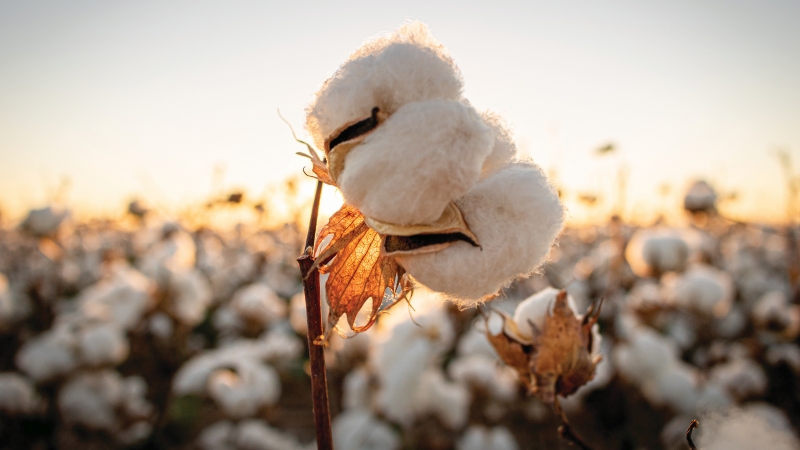Export Sales Drive Market as Potential for Explosive Growth Builds
New York cotton futures prices continue to outlast the bearish overtone of USDA’s December supply demand report, as U.S. export sales lead the way.
Mill buying kept prices in a supportive mood all week as the 71-72 cent range, basis March, dominated weekly trading. The range-bound trading between 70.50 and 73.00 cents is expected to account for the bulk of the trading through the end of the calendar year, as the market continues to consolidate and attempt to establish the 71.50 cent level as a new level of support.
Yet, for now, the next level of support is the 70 cent level. Nevertheless, trading remains in the middle of the four week range.
Kindling and other wood are being stacked higher and higher in preparation for an explosive fire under the market. The ingredients seem to be in place, but the bevy of world stocks still sits over the market and is keeping the explosive ingredients away from the blaze.
Call sales dwarf call purchases, and speculative fund managers continue to add to their already record long speculative long positions. That was very evident again this week, as mills added to their bets of lower prices as funds added to their respective bets for higher prices. A showdown appears inevitable. The technical momentum suggests the market is attempting to move slowly, but the inequality in the call sales ratio, coupled with the managed fund positions, cannot be ignored much longer.
Look for the current trading range to continue with a definite upward bias. Yet, given the market’s heavy speculative position, there is some nervousness surrounding the back and forth of U.S.-Russia relations.
Net U.S. export sales for the past week were the second highest of the marketing year, totaling 318,000 RB (311,700 upland and 6,400 Pima), plus an additional 66,000 RB of upland sold for 2017-18, took weekly total sales to 384,100 RB. (The question arises from time to time of the use of RB which stand for “running bales.” Sales and shipments are reported in running bales, or actual bales, typically weighing between 500-502 pounds. World and U.S. production and other supply demand data are reported in 480 pound bales, better known as “statistical bales,” or just bales.) Vietnam (89,700) and China (84,000) remained as the primary buyers along with Pakistan, Indonesia and Turkey.
Shipments were very positive, totaling 281,400 RB of upland and 16,700 RB of Pima. Primary destinations of upland were Vietnam, China, Mexico, Indonesia and Colombia. Primary destinations of Pima were China, Peru and Vietnam. U.S., Australian and Brazilian cotton continue to be the primary choice of mills, but only U.S. high quality cotton is readily available.
The current trading range is beginning to grow a bit old, and the very narrow 70 +/- cent bottom and the 72+/- cent top trading range has existed for some three weeks. A decisive close outside of this range could occur anytime now and will likely give the market new direction.
The world remains awash with stocks, but Chinese news speaks of improved demand, as reported by USDA last week. This, as well as the aforementioned call sales and long fund position, begs for higher prices. Too, the expectation for higher inflation means higher commodity prices across the board.
Nevertheless, old crop prices – the March, May and July contracts – are beginning to separate themselves from the new crop 2017-18 contracts. This is expected to continue.
Give a gift of cotton today.









